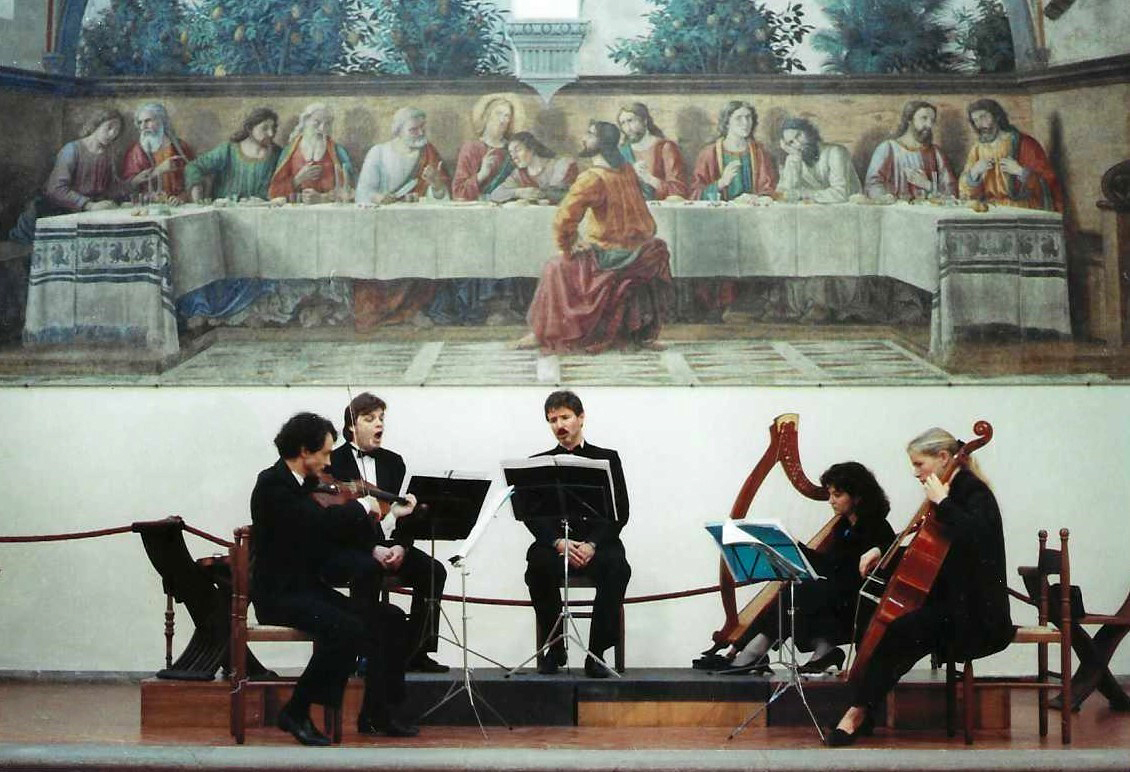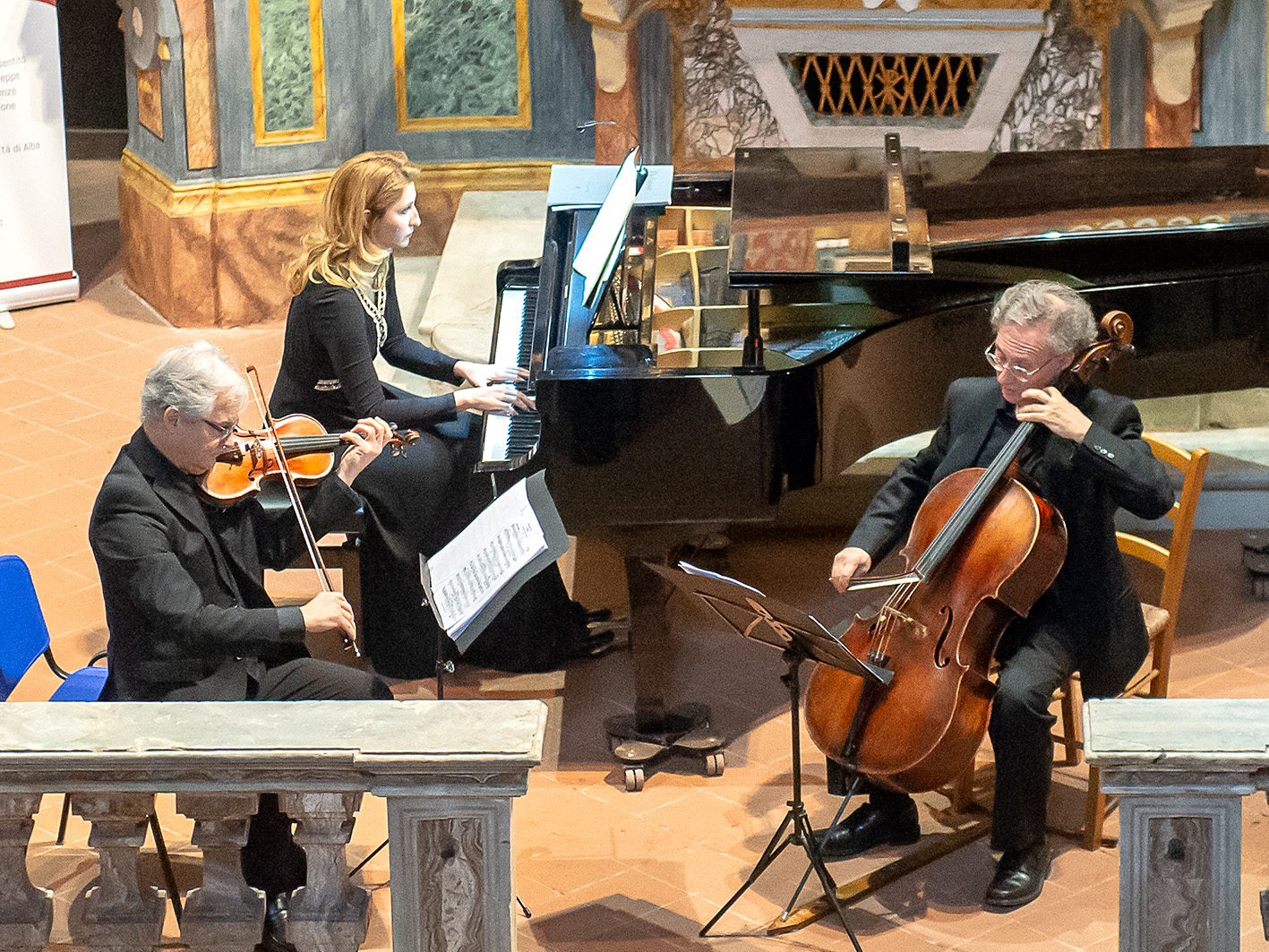as told by founder and artistic director, Michael Stüve
The ensemble Musica Ricercata was created in Florence, Italy in 1987 by a group of professional musicians who, through new programming initiatives, intended to trace the history of music with the scope of improving the comprehension of its evolution. This project is made possible also by the interest and collaboration of numerous other cultural and administrative organizations including artistic associations, musical institutions, ministries, libraries, museums, universities and academies. It’s production includes research, elaboration and arrangements of the historic repertoire, the drafting of new scores, the creation and performance of innovative and unique concert programmes, the organization of concert seasons in Florence and elsewhere in Tuscany, as well as tours in both Italy and abroad. Musica Ricercata’s efforts include the organization of, and participation in national and international conferences, publications and musical recordings, and the realization of increasingly complex projects, some of which with the support of the European Commission. The history of the ensemble can be divided into four periods:
1987-1995
In the initial so-to-speak preparatory phase, the group dedicated itself primarily to chamber music performances of emblematic repertoire from the development of various musical forms: the history of the motet from its origins in the school of Notre-Dame up to the 18th century, the forme fixes of the ars nova and the French chanson of the 15th and 16th centuries, instrumental music preceding the baroque period and the evolution of the sonata from the chanson, are among the themes invoked. In short time our interest extended to the relationship between popular and formal music whether medieval or classical; the popular songs elaborated by Ludwig van Beethoven with their variations for piano and strings, from the beginning, dissuaded us from becoming specialists of a single epoch or a predetermined musical style, whether medieval, renaissance or other. Programmes on the birth of the sonata, together with a programme of music for one, two, three and four harpsichords by Johann Sebastian Bach were taken on tour in Savoie, France and to the 50th Quincena Musical (1989) in San Sebastian, Spain. Our invitation to the 50th Sagra Musicale Umbra in 1995 was due to our programme on the origins of the Italian language within the domain of the troubadours and rhymers from the court of Federico II, on the occasion of the 800th anniversary of the emperor’s birth. If it was the troubadours taking refuge in Italy during the Albigensian Crusades (1209-1229) that inspired us with the music and language of their time, it was the masters of the Medici court that introduced us to the monody of the early Baroque era. In 1993 we also presented to the public Ibero-Afro-American music dating between 1500 and 1700, a repertory that was further enriched on the occasion of our tour in Colombia in 2011.
1996-2002
In the period between 1996 and 2002 we primarily dedicated our work to the realization of projects supported by the European Commission as part of the cultural programmes Kaleidoscope and Raphael and to a project entrusted to us by the Tuscany Region with the intent of reevaluating the many cultural contributions of rural areas in medieval Tuscany, this also co-financed by the European Community as part of the programme L.E.A.D.E.R. II (Liaison Entre Actions de Développement de l’Économie Rurale). It was through this initiative that the historical-musical itinerary within lesser known areas of Tuscany ‘La Via del Sale’ (‘The Salt Route’) was conceived. The project MUSA MUSEO MUSICA instead, selected to be part of the triennial European project Raphael and dedicated to the development of musical instruments, took place with the collaboration of musical instrument museums in various European
countries. Our projects inserted within the programme Kaleidoscope involved the study and research of fragments and musical compositions left to us from the ancient Greek and Roman civilisations. These were collected and elaborated into a suite ‘Hellenika’ by Michael Stüve. Through this, (excluding the Babylonian Nikkal Anthem which we presented in a separate concert version in 2018), we touched upon the earliest origins of music repertory.
2003-2012
In the period between 2003 and 2012 we led many tours worldwide: Algiers and Kouba (Algeria), Hamburg, Berlin, Heiligenhafen, Kiel, Koblenz, Neuwied, Potsdam and Wolfsburg (Germany), Bogota and Cartagena (Colombia), Vatican City, in Ebino, Kawaminami, Kiryu, Kofu City and Kyoto (Japan), Gelderland and Kennemerland (Netherlands), Larnaca and Nicosia (Cyprus), Moscow (Russia), Nairobi (Kenya),Vienna and Spittal an der Drau (Austria), often on the invitation of the Italian and Austrian Embassies as well as various Italian Cultural Institutes. Many of these programmes involved modern and classical music for duo, piano trio, or 18th-century string quartet using original period instruments.
Concurrently in Florence we created and performed various concert series such as ‘The Birth of the String Quartet’, ‘Summer Evenings in Casa Buonarroti’ and ‘Europe in Music’. The latter series in 2008, proposed in eight concerts music from varying epochs and included at least one composer from each of the European Community countries (including now defunct countries such as Burgundy), demonstrating ever more complexity in our programmed events (see the publication "MUSICA RICERCATA in Florentine Museums: a New Approach to Cultural Understanding").
From 2013
By 2013 due to our deepened musical experience we were able to ultimately enrich our repertoire. Individual themes were now enhanced and exhibited in a series of concerts. The integral cycle of Heinrich Ignaz Franz Biber’s sonatas on the Mysteries of the Rosary were performed. We presented lyric works, sonatas, quartets and concertos by Chevalier de Saint-George, and retraced the history of jazz. In 2013, on the occasion of the 700th anniversary of Giovanni Boccaccio’s birth, eight concerts featuring 16th century madrigals based on the songs that conclude the various days of the Decameron were performed. A repetition took place in December of 2019 in the Salone Martino V of the historic Florentine hospital Santa Maria Nuova - our last public concert preceding the Covid-19 pandemic. Since 2013, we have also interpreted the late Beethoven Quartets and performed an abbreviated version of Giuseppe Verdi’s opera La Traviata in an elaboration for soprano and string trio. In arrangements for string sextet, we performed symphonic works by Beethoven in Vienna, and compositions by Mercadante, Reger, Pfitzner and Franz Schmidt in Florence. We performed the suite of ancient melodies ‘Hellenika’ in several Tuscan archeological sites. As part of the European Commission’s programme NextGenerationEU, we were given a contribution towards the creation of an interactive digital archive that provides our repertoire and recordings of performances with their (relative) sources that are preserved in both Italian and international libraries. Through this site the scores of our elaborations will be made available on request to the general public (see ‘Dissemination’ >; ‘Musical scores’).
Michael Stüve





